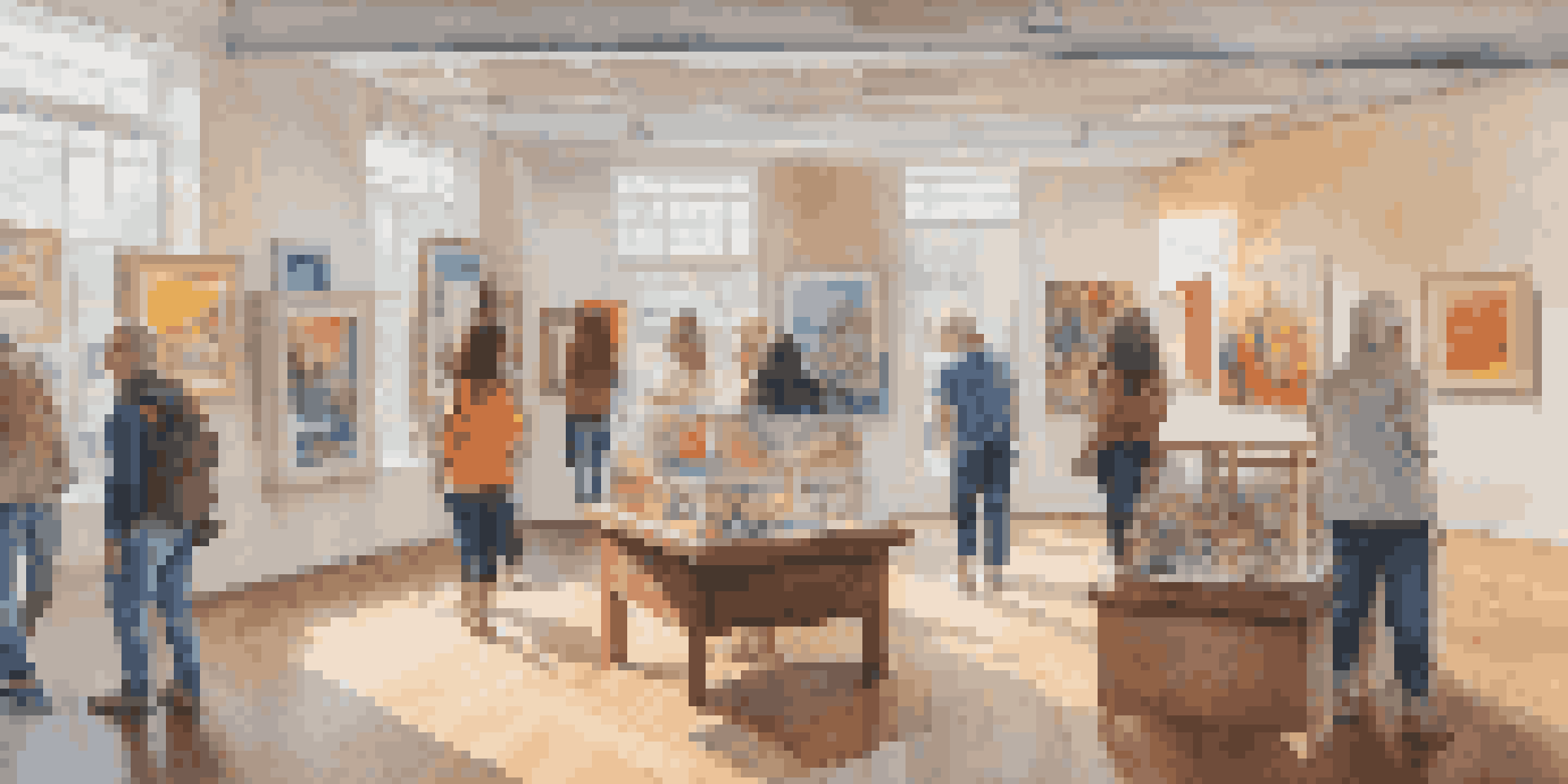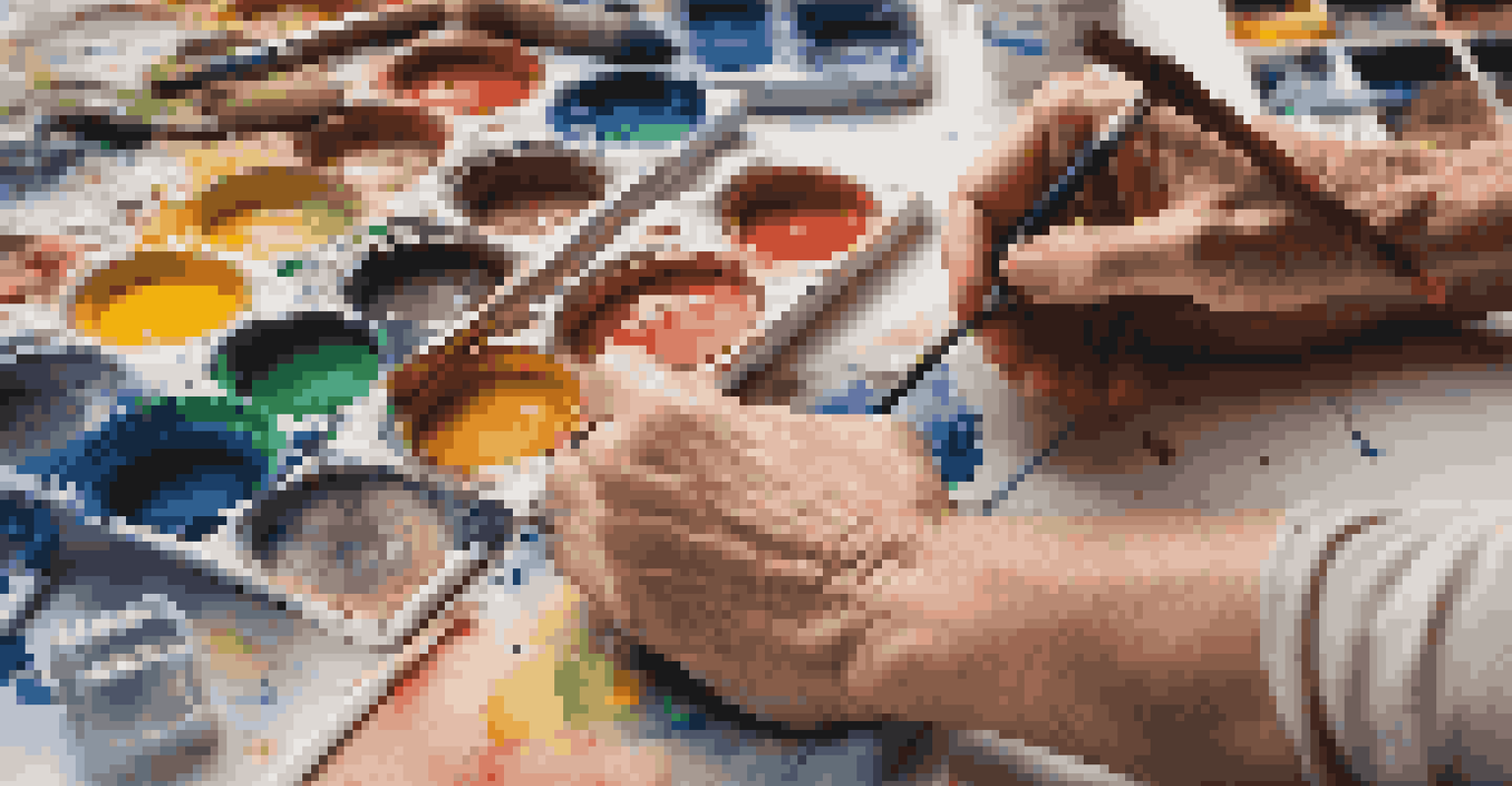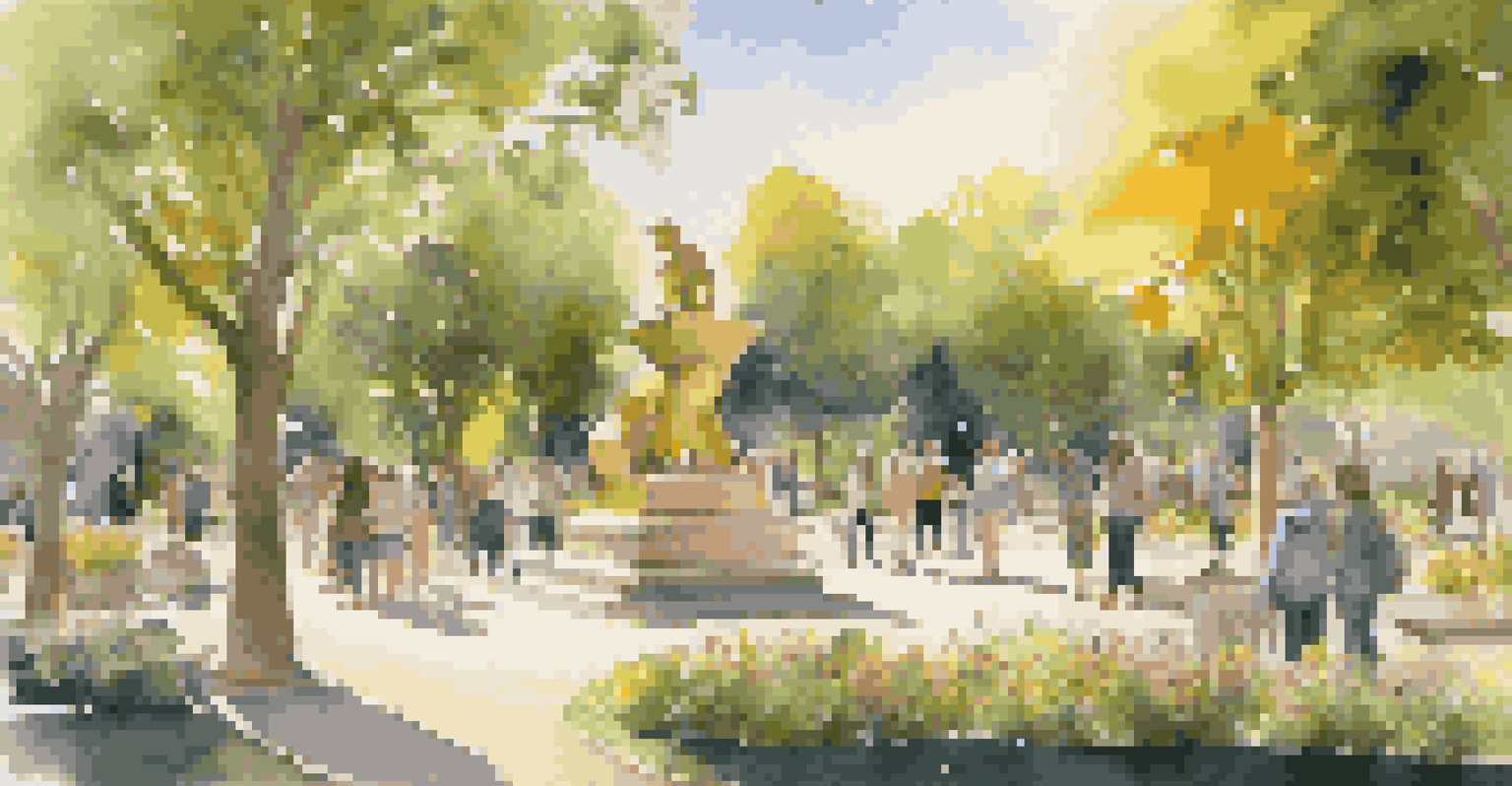Art Grants: Enhancing Access for Underrepresented Groups

Understanding Art Grants and Their Importance
Art grants are financial awards given to artists and organizations to support creative projects. They play a crucial role in fostering artistic expression and innovation, especially among underrepresented groups. By providing necessary funds, these grants enable artists to explore their unique voices and perspectives.
Art is not a thing, it is a way.
Understanding the importance of these grants goes beyond just financial support; they also serve as a means to level the playing field. Many talented artists from marginalized communities face barriers that can stifle their creativity. Art grants can help dismantle these barriers, allowing diverse voices to flourish in the arts.
In essence, art grants are not just about funding; they are about nurturing talent, promoting inclusivity, and enriching the cultural landscape. The more diverse the voices in the arts, the more vibrant and relatable our creative expressions become.
Historical Context of Underrepresentation in the Arts
Historically, the arts have often been dominated by a narrow demographic, leaving many voices unheard. This lack of representation has deep roots in societal structures that have marginalized certain groups, making it difficult for them to access resources. Understanding this context is essential to appreciating the need for targeted art grants.

For instance, women, people of color, and LGBTQ+ artists have frequently faced hurdles in gaining visibility and funding. As a result, their narratives and contributions have been underrepresented in mainstream art. Recognizing this historical context helps us understand the critical role that art grants play in promoting equity and inclusion.
Art Grants Foster Inclusivity
Art grants provide crucial financial support to underrepresented artists, enabling diverse voices to thrive in the creative landscape.
By addressing these disparities, art grants not only support individual artists but also contribute to a broader cultural shift. They help create a more inclusive environment where diverse stories and experiences are celebrated, enriching the artistic community as a whole.
Types of Art Grants Available
Various types of art grants cater to different needs and artistic disciplines. Some grants focus on specific art forms like visual arts, music, or performing arts, while others may be aimed at community projects or educational initiatives. This diversity allows artists to find funding that aligns closely with their creative goals.
The arts are not a luxury; they are a necessity for the human spirit.
Additionally, some grants are designed for emerging artists, providing them with the resources they need to kickstart their careers. Others may be targeted towards established artists looking to take on larger projects or collaborations. Understanding these distinctions can help artists identify the right opportunities for their unique situations.
Beyond just funding, many art grants also offer mentorship and networking opportunities. This holistic approach not only supports financial needs but also fosters professional growth, creating a supportive community for underrepresented artists.
The Application Process for Art Grants
Applying for art grants can seem daunting, but understanding the process can make it more manageable. Generally, it involves crafting a compelling proposal that outlines the project, its objectives, and the impact it will have on the community or the art world. This is where many applicants have the chance to showcase their unique perspectives.
It's essential to tailor each proposal to the specific grant's requirements, highlighting how the project aligns with the grant's mission. For underrepresented artists, sharing personal stories and cultural significance can be powerful tools for making their case. This approach not only illustrates the project’s value but also establishes a deeper connection with the reviewers.
Challenges for Underrepresented Artists
Many talented artists face systemic barriers and a lack of resources that hinder their ability to access funding opportunities.
Lastly, seeking feedback from peers or mentors before submitting can be invaluable. A fresh set of eyes can help identify areas for improvement, ensuring that the application is as strong as possible. Remember, persistence is key—many successful artists have faced rejection before finding the right opportunity.
Challenges Faced by Underrepresented Artists
Despite the availability of art grants, underrepresented artists still encounter numerous challenges. These may include limited access to information about available grants, as well as a lack of resources to navigate the application process. This can create a cycle where talented individuals miss out on opportunities simply because they are not aware of them.
Moreover, systemic inequalities can manifest in the grant selection process itself. Biases, whether intentional or not, can impact which projects receive funding, often favoring those who conform to traditional norms. This reinforces the need for continued advocacy and reform in how grants are awarded.
Recognizing these challenges is the first step toward creating meaningful change. By addressing barriers and establishing more equitable practices, we can help ensure that diverse voices are not only heard but celebrated in the art world.
The Role of Community in Supporting Artists
Community support is vital for underrepresented artists navigating the world of art grants. Local organizations, art groups, and fellow artists can provide valuable resources, from sharing grant opportunities to offering mentorship. Building a strong network can significantly enhance an artist’s chances of success.
Furthermore, community initiatives often create platforms for underrepresented artists to showcase their work. These exhibitions or performances can serve as stepping stones, drawing attention to their talent and increasing visibility. The more support an artist receives from their community, the more empowered they feel to pursue their creative endeavors.
Community Support Enhances Success
Building a strong network within the community can significantly empower underrepresented artists in their pursuit of grant funding and artistic expression.
Ultimately, fostering a culture of collaboration and support within the art community can lead to a more inclusive environment. Together, we can amplify the diverse voices that make our artistic landscape rich and vibrant.
Success Stories: Impact of Art Grants
Success stories of artists who have benefited from art grants illustrate the transformative power of these resources. Many artists have used grant funding to launch projects that not only elevate their own work but also engage their communities. These stories serve as inspiring examples of what is possible when underrepresented voices receive support.
For instance, some artists have created public installations that reflect their cultural heritage, fostering dialogue and understanding within their communities. Others have initiated workshops or mentorship programs aimed at nurturing the next generation of diverse artists. Such projects showcase the broader impact that art grants can have beyond individual success.

These success stories highlight the importance of continued investment in art grants for underrepresented groups. By sharing these narratives, we can inspire others to pursue their artistic passions while advocating for a more equitable and inclusive arts landscape.